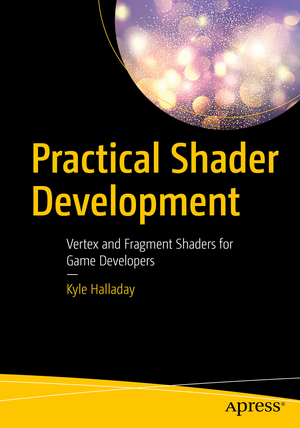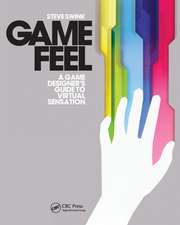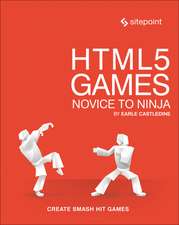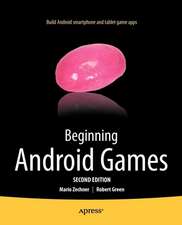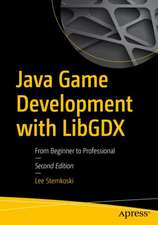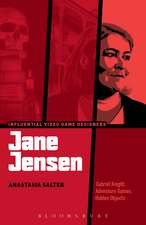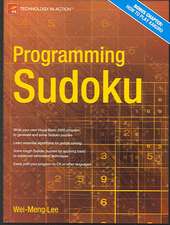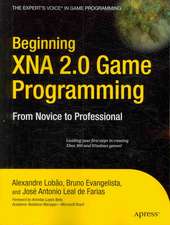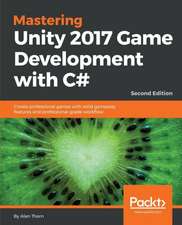Practical Shader Development: Vertex and Fragment Shaders for Game Developers
Autor Kyle Halladayen Limba Engleză Paperback – 11 apr 2019
Practical Shader Development teaches the theory behind how shaders work. The book also shows you how to apply that theory to create eye-popping visual effects. You’ll learn to profile and optimize those effects to make sure your projects keep running quickly with all their new visuals. You’ll learn good theory, good practices, and without getting bogged down in the math.
Author Kyle Halladay explains the fundamentals of shader development through simple examples and hands-on experiments. He teaches you how to find performance issues in shaders you are using and then how to fix them. Kyle explains (and contrasts) how to use the knowledge learned from this book in three of the most popular game engines today.
What You'll Learn
- Understand what shaders are and how they work
- Get up to speed on the nuts and bolts of writing vertex and fragment shaders
- Utilize color blending and know how blend equations work
- Know the coordinate spaces used when rendering real-time computer graphics
- Use simple math to animate characters, simulate lights, and create a wide variety of visual effects
- Find and fix performance problems in shaders
- See how three popular game engines (Unity, UE4, Godot) handle shaders
Who This Book Is For
Programmers who are interested in writing their own shaders but do not know where to start, anyone who has ever seen shader code on a forum and wished they knew how to modify it just a little bit to fit into their own projects, and game developers who are tired of using the default shaders found in the game engines they are using. The book is especially useful for those who have been put off by existing shader tutorials which introduce complex math and graphics theory before ever getting something on the screen.
Preț: 335.13 lei
Preț vechi: 418.91 lei
-20% Nou
Puncte Express: 503
Preț estimativ în valută:
64.15€ • 69.70$ • 53.92£
64.15€ • 69.70$ • 53.92£
Carte disponibilă
Livrare economică 31 martie-14 aprilie
Preluare comenzi: 021 569.72.76
Specificații
ISBN-13: 9781484244562
ISBN-10: 1484244567
Pagini: 330
Ilustrații: XXI, 381 p. 159 illus., 136 illus. in color.
Dimensiuni: 178 x 254 mm
Greutate: 0.73 kg
Ediția:1st ed.
Editura: Apress
Colecția Apress
Locul publicării:Berkeley, CA, United States
ISBN-10: 1484244567
Pagini: 330
Ilustrații: XXI, 381 p. 159 illus., 136 illus. in color.
Dimensiuni: 178 x 254 mm
Greutate: 0.73 kg
Ediția:1st ed.
Editura: Apress
Colecția Apress
Locul publicării:Berkeley, CA, United States
Cuprins
1. Hello, Game Graphics.- 2. Your First Shaders.- 3. Using Textures.- 4. Translucency and Depth.- 5. Making Things Move.- 6. Cameras and Coordinates.- 7. Your First 3D Project.- 8. Diffuse Lighting.- 9. Your First Lighting Model.- 10. Normal Mapping.- 11. Cubemaps and Skyboxes.- 12. Lighting In Depth.- 13. Profiling Shaders.- 14. Optimizing Shaders.- 15. Precision.- 16. Writing Shaders in Unity.- 17. Writing Shaders in UE4.- 18. Writing Shaders in Godot.- 19. Appendix A. Important Code Snippets.
Notă biografică
Kyle Halladay is a professional game programmer living in Chicago. He has more than seven years of experience writing about shaders and building graphics technology for games and architectural visualizations.
Textul de pe ultima copertă
It’s time to stop thinking that shaders are magical. You can use shaders to turn data into stunning visual effects, and get your hands dirty by building your own shader with this step-by-step introduction to shader development for game and graphics developers. Learn how to make shaders that move, tint, light up, and look awesome, all without cracking open a math textbook.
Practical Shader Development teaches the theory behind how shaders work. The book also shows you how to apply that theory to create eye-popping visual effects. You’ll learn to profile and optimize those effects to make sure your projects keep running quickly with all their new visuals. You’ll learn good theory, good practices, and without getting bogged down in the math.
Author Kyle Halladay explains the fundamentals of shader development through simple examples and hands-on experiments. He teaches you how to find performance issues in shaders you are using and then how to fix them. Kyle explains (and contrasts) how to use the knowledge learned from this book in three of the most popular game engines today.
What You'll Learn:
- Understand what shaders are and how they work
- Get up to speed on the nuts and bolts of writing vertex and fragment shaders
- Utilize color blending and know how blend equations work
- Know the coordinate spaces used when rendering real-time computer graphics
- Use simple math to animate characters, simulate lights, and create a wide variety of visual effects
- Find and fix performance problems in shaders
- See how three popular game engines (Unity, UE4, Godot) handle shaders
Caracteristici
Teaches what you need to know about shaders through an example-based approach that is fun and doesn’t require a lot of 3D math or in-depth graphics knowledge Shows you how to apply what is learned about shaders for the major gaming engines: Unity, Unreal Engine 4, and Godot Leaves you with a foundation in shader development that can be carried into a career in vfx or graphics development
